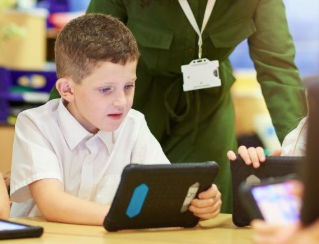Innovation in education is key to equipping students with the skills they need to thrive in an evolving world. As the nature of work and global challenges shift, schools must embrace forward-thinking practices that cultivate adaptability, creativity, and digital fluency. Innovative education goes beyond technology—it emphasizes real-world relevance, interdisciplinary learning, and future-ready mindsets.
Why Future Skills Matter
Future skills are competencies that enable learners to succeed in dynamic and unpredictable environments. These include critical thinking, collaboration, emotional intelligence, digital literacy, and problem-solving. Equipping students with these skills prepares them for a wide range of pathways—from careers in STEM to roles in creative industries or community leadership.
How Innovative Education Builds Future Skills:
- Project-Based Learning
Real-world challenges require collaboration, research, and creative solutions. Project-based learning encourages students to work together, apply knowledge, and reflect on outcomes. - Technology Integration and Digital Literacy
Tools like coding platforms, digital media, and virtual labs allow students to build technical skills while learning how to navigate and evaluate digital information responsibly. - Interdisciplinary Curriculum
Innovative programs combine science, technology, engineering, arts, and math (STEAM) to reflect how subjects connect in real life. This approach fosters systems thinking and innovation. - Flexible Learning Models
Hybrid, remote, and self-paced learning options support student autonomy and adaptability. These models reflect the flexibility required in modern workplaces. - Global Competency and Cultural Awareness
Virtual exchanges, multilingual content, and diverse perspectives prepare students to communicate and collaborate across cultures. - Entrepreneurial and Design Thinking
Encouraging students to ideate, prototype, and iterate develops resilience and a mindset for continuous improvement. - Social-Emotional Learning (SEL)
Emotional intelligence, empathy, and self-regulation are foundational to future leadership and teamwork. SEL practices are essential components of future-ready classrooms.
Creating Global Classrooms Through Technology
Technology is making it possible to break down classroom walls and create global learning environments. By connecting students from different countries and backgrounds, schools can promote cross-cultural understanding, shared projects, and global citizenship.
Ways to Create Global Classrooms:
- Virtual Exchanges and Video Conferencing: Platforms like Zoom, ePals, and Empatico allow students to connect and collaborate in real time with peers around the world.
- Collaborative Global Projects: Students work together on shared issues such as climate change, innovation, or cultural storytelling, developing both empathy and critical thinking.
- Language Learning and Multilingual Platforms: Tools like Duolingo, Flipgrid, and Google Translate support multilingual communication and foster appreciation for linguistic diversity.
- Access to International Resources: Online courses, virtual museum tours, and global news outlets provide students with diverse perspectives and content.
Benefits of Global Classrooms:
- Encourages cultural awareness and empathy
- Prepares students for a global workforce
- Enhances digital communication and collaboration skills
- Promotes global citizenship and responsibility
Innovation in Educational Leadership
For innovation to thrive in the classroom, it must be modeled and supported by educational leaders. Forward-thinking administrators play a critical role in fostering environments where teachers and students are encouraged to explore new ideas, take risks, and embrace continuous improvement.
Key Qualities of Innovative Educational Leaders:
- Vision-Oriented: Set clear, future-focused goals that align innovation with student learning outcomes.
- Collaborative: Engage teachers, families, and communities in shaping a shared mission for growth and change.
- Supportive of Professional Development: Provide opportunities for educators to learn new tools, strategies, and instructional models.
- Data-Informed: Use data analytics to guide decision-making and support evidence-based innovations.
- Equity-Focused: Ensure that innovation benefits all students, regardless of background or learning needs.
Examples of Innovative Leadership Practices:
- Launching pilot programs for emerging technologies or teaching methods
- Creating leadership teams that include teacher voice and student feedback
- Developing partnerships with local industries, higher education, or global networks
- Encouraging a culture of experimentation and reflective practice
Examples of Innovative Educational Practices:
- Innovation Labs and Makerspaces – Support hands-on exploration and STEM learning.
- Career Pathway Programs – Connect students with internships, certifications, and career-related experiences.
- Gamified Learning Platforms – Build engagement while developing problem-solving and logic skills.
- Student-Led Conferences and Portfolios – Promote reflection and ownership of learning progress.
Considerations for Future-Focused Implementation:
- Align innovations with curriculum goals and equity priorities
- Provide professional development to support new teaching approaches
- Invest in infrastructure that supports technology-rich environments
- Involve students in shaping their learning experiences
Conclusion
Innovative education is essential for preparing students with the future skills they need to lead, adapt, and succeed. By creating dynamic, inclusive, and forward-thinking classrooms—and leveraging technology to connect learners globally—educators and school leaders can inspire lifelong learners and empower the next generation of problem-solvers and change-makers.














